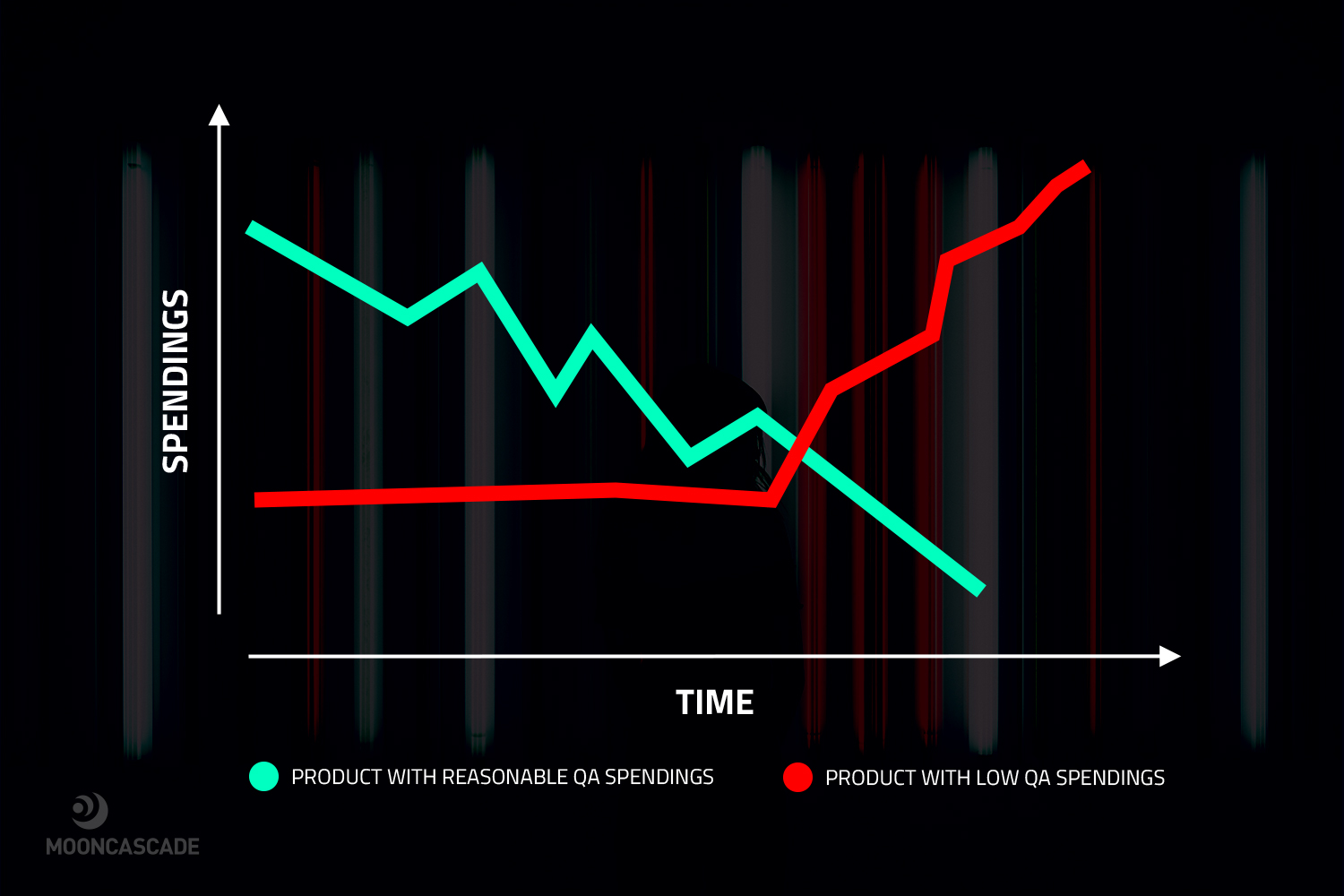QA Testing: Why An Unhappy Team Can Cost You.
Being a quality assurance manager isn’t always easy. Quality assurance testing is the final step before launch time, also known as “where the money happens”. That means everyone—from the client and shareholders to the project manager—is looking at you. If something goes wrong, you’ll be the first to know. And you’ll probably be the first to come under fire.
That’s a lot of stress for one person to handle. But blaming QA for any hiccup in your product’s performance isn’t just unfair from a human perspective, it’s wrong, too. After all, you’re paying the QA team to find these hiccups in the first place. And finding them is in your best interest. For your business to be successful, your quality assurance process needs to be successful, and for that to happen, everyone involved needs to have a stake in the process.
Think of QA like any other aspect of product development. Instead of putting all the pressure on a single person and getting angry when things go wrong, why not see how you can help? Strong quality assurance builds stronger products. Here’s what you can do to give yours a boost.
The challenges of QA testing.

The first way clients and companies can make a QA manager miserable is simply through a lack of understanding. Many people still don’t recognize how much work quality assurance requires, and just how crucial it is to a product’s success. I rarely see testers thanked when things go well, but I often see them blamed when they don’t. Plus, QA managers are frequently paid less than developers, though this is slowly changing.
QA managers are also put under pressure through intense time constraints. Part of these are necessary, due to the nature of agile development. When you work in sprints, you have to be able to deliver results and adapt to change quickly.
However, much of the time pressure put on QA managers could be mitigated by better planning and budgeting. You may have heard of “QA bottlenecks,” which refer to delays in development due to lagging quality assurance processes. These aren’t always the QA person’s fault. They can be due to factors ranging from unrealistic client expectations to poor coordination between teams or simply underfunded testing.
This leads us to the final source of stress for QA managers: a lack of responsibility taken by others, whether on the team’s side or the client’s side. It’s easy to pigeonhole QA testers as the “bad news guys,” but it’s much harder to actually take some of that responsibility on your own shoulders. And to do that, you have to know where to look.
Know what quality assurance testing can do and what it’ll cost you.
To get the most out of QA, it’s important to understand its benefits. QA testing will help you fix bugs, optimize performance through regular feedback, and cut wasteful spending. Though it’s often regarded as a luxury, QA testing provides a constant sanity check to your product’s features and is essential to its success once it hits the market.
The downside of quality assurance testing is that finding bugs and fixing them takes time. This process can involve hours or even days of extra work when something unexpected pops up, but it shouldn’t be rushed no matter how close to launch time a project may be. Speeding through QA will cost you quality. That’s just the way it is.
Plus, bugs are much more expensive to fix once your product launches. The less you test during development, the more time-consuming and expensive it becomes once things have gone live. So think of QA as a short-term hit in exchange for bigger long-term returns. Instead of rushing or trying to do it cheaply, make quality assurance a fixed part of your plans from the start.
Apply pressure wisely.

Speaking of budgets, there are usually big investments at stake in any software development project. Tempers can fly and most people will feel a certain degree of stress—that’s normal. But directing too much of it toward your quality assurance manager won’t help you save any money.
If you’re a client, pressuring your quality assurance manager with crazy deadlines or cramming in unrealistic last-minute feature requests that they won’t have time to test can cost you their trust, and even their presence in the team. Having your QA step down mid-project will be far more expensive than taking the time to build a solid partnership with them.
If you’re a project manager, a poor relationship with your quality assurance testers can make you lose allies, and snowball into more work for everyone else. It’s important for project managers to act as buffers between the development team and the client, to ensure that enough time and resources are allocated to testing.
If you’re an employer, putting too much stress on your QA manager means making your employee unhappy and in some cases, unhealthy too. This can make them want to change jobs, decreasing your product’s quality in the interim and lowering your reputation in your industry down the line.
Share responsibility and enable quality.
To cut pressure on your QA, get your entire team involved in the quality assurance process. A little effort can go a long way toward improving your QA manager’s happiness and efficiency, not to mention your project’s success. Here are a few tips direct from the professionals at Mooncascade to get you started:
- Communicate regularly
- Discuss quality assurance every time you meet
- Determine each iteration’s scope through consensus
- Confirm product changes with every development unit
- Write tickets with both the project manager and the client
- Don’t blame QA when they find bugs, celebrate!
Remember: quality assurance isn’t just something you should tolerate. It’s something you should enable.
Funding automated testing frameworks, for example, is another great way to improve any company’s quality assurance processes. This is an investment, of course, but one that’ll help your QA manager test more quickly, more efficiently, and at a lower cost than if they were doing it on their own.
Don’t cut corners with QA—help build it up.
In agile development, things will always take a few unexpected twists and turns. Sometimes your QA will need more time to accomplish their tasks, and sometimes they’ll need more money than you’d like to spend. But anyone looking to build a great product should see these costs as a necessary sacrifice towards building a high-calibre product.
Treat your QA manager well and they’ll make your product shine. Know what QA can do for you, go easy on the pressure, and make sure your entire team is communicating and enabling quality as much as possible. Although spending resources on quality assurance may seem costly in the short-term, it’s a small price to pay for all the value it’ll build for your business in the long run.

BECOME A QA SPECIALIST AT MOONCASCADE
We are looking for a passionate QA to join our fast-growing team. If you want to be part of our agile quality assurance team and help to build exciting mobile and web products for international clients, then let us know about you!

